Herts and Middlesex Wildlife Trust
Herts and Middlesex Wildlife Trust manages over 40 nature reserves covering nearly 810 hectares (2,000 acres) north of London, in Hertfordshire and the former county of Middlesex, which is now divided between the London boroughs of Barnet, Enfield, Harrow and Hillingdon. It has over 21,000 members, and is one of 46 Wildlife Trusts across the UK.[1][2] It is a Registered Charity, with its Registered Office in St Albans, and had an income in the year to 31 March 2014 of over £1.5 million.[3]
Hertfordshire and Middlesex Wildlife Trust Limited | |
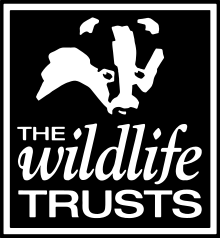 | |
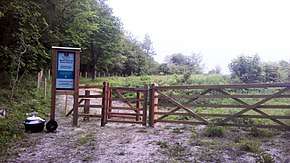 The entrance to Hexton Chalk Pit, near Hitchin | |
| Formation | October 9, 1964 |
|---|---|
| Type | Conservation charity |
| Registration no. | Registered charity 239863 |
| Headquarters | St Albans, Hertfordshire |
Region | Hertfordshire, parts of North London |
Chief Executive | Lesley Davies |
Main organ | Local Wildlife Sites Newsletter |
Parent organization | The Wildlife Trusts |
| Website | www |
Formerly called | Hertfordshire & Middlesex Trust for Nature Conservation |
The Trust's activities include managing nature reserves, advising landowners on how to manage their land for wildlife, commenting on planning applications, advising planning authorities and campaigning to protect wildlife. The Trust also encourages people to be active volunteers helping to maintain nature reserves.[4]
The first preparatory meeting of what was to become the Trust was held on 16 November 1963, and the Hertfordshire & Middlesex Trust for Nature Conservation was incorporated on 9 October 1964. By 1970 it had twenty reserves and in the same year it took over management of its first Site of Special Scientific Interest (SSSI), Blagrove Common. In 1987 it changed its name to the Herts and Middlesex Wildlife Trust.[lower-alpha 1] In 2007 it purchased Amwell Quarry, and started restoration which has now made the site internationally important for its wetland birds.[5]
Two of the Trust's nature reserves are Ramsar sites, internationally important wetland reserves; fifteen are SSSIs, and five are Local Nature Reserves. The first site was Fox Covert, donated by Mr Fordham of Letchworth on the Trust's foundation in 1964.[5] The largest is King's Meads, at 96 hectares (240 acres); this is water meadows where 265 wildflower species have been recorded, and it is an important site for over-wintering stonechats.[6] The smallest is Alpine Meadow at 0.8 hectares, which has been designated an SSSI as an example of unimproved chalk grassland.[7]
Nature reserves
Key
|
|
| Site | Photograph | Area[lower-alpha 2] | Location[lower-alpha 2] | Public access[lower-alpha 2] | Designations | Description |
|---|---|---|---|---|---|---|
| Aldbury Nowers[8] | 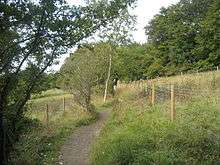 |
19.7 ha (49 acres) | Tring 51.8125°N 0.6197°W SP 952 135 |
YES | SSSI[9] | According to Natural England this site "contains one of the best remaining areas of chalk downland in the county as well as one of the finest examples of ancient 'beech hanger' woodland".[9] |
| Alpine Meadow[10] | 0.8 ha (2.0 acres) | Berkhamsted 51.7831°N 0.5670°W SP 989 103 |
YES | SSSI[7] | This is a steeply sloping area of meadow and woodland, and it has been designated an SSSI as a rare example of unimproved chalk grassland. Butterflies include marbled white and the rare Duke of Burgundy.[7] | |
| Amwell Quarry[11] | 40.1 ha (99 acres) | Amwell 51.7965°N 0.0053°W TL 376 127 |
YES | SSSI[12] Ramsar[12] SPA[12] | This former gravel pit is of international importance for wintering wildfowl. It also has many species of breeding birds, damselflies and dragonflies, including the hairy dragonfly, red-eyed damselfly and southern hawker.[11] | |
| Ashwell Quarry and Quarry Springs[13] | 3.0 ha (7.4 acres) | Ashwell 52.0402°N 0.1738°W TL 253 395 |
PO | RIGS[14] | Plants in the quarry include pyramidal orchid, clustered bellflower and glaucous sedge, and there are rare mosses in shaded hollows. Quarry Springs has rare wildlife such as flatworms which need water which is clean and at a constant temperature around 10°C.[13][15] | |
| Balls Wood[16] | 58.5 ha (145 acres) | Hertford Heath 51.778°N 0.047°W TL 348 106 |
YES | The site has areas of hornbeam coppice and mixed woodland with wide grassy paths, which have many butterflies in the spring. Great spotted woodpeckers and sparrowhawks breed on the site.[16] | ||
| Blagrove Common[17] | 3.9 ha (9.6 acres) | Sandon 51.9863°N 0.0668°W TL 328 337 |
YES | SSSI[18] | This is marshy grassland on poorly draining clay, which is now a scarce habitat in the county. The rich flora include several species of orchids, cuckoo flowers, and marsh marigolds.[19] | |
| Broadwater Lake[20] | 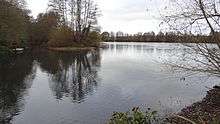 |
19.4 ha (48 acres) | Harefield 51.5852°N 0.4924°W TQ 045 884 |
YES | SSSI[20] | The reserve includes Korda Lake, Long Pond, the River Colne and the western side of Broadwater Lake. It is part of the Mid Colne Valley SSSI, which has nationally important bird colonies including great crested grebes, cormorants and gadwalls.[20] |
| Cassiobury Park[21] | 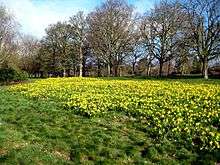 |
24.6 ha (61 acres) | Watford 51.6635°N 0.4262°W TQ 089 972 |
YES | LNR[21] | The nature reserve is a corner of the park. It has marshland and open pools, together with areas of wet woodland and pasture. These provide breeding sites and food for many bird species.[21] |
| Danemead[22] | 5.6 ha (14 acres) | Hoddesdon 51.7523°N 0.0507°W TL 346 077 |
YES | SSSI[22] | This is part of the Wormley-Hoddesdonpark Wood North SSSI. It has areas of wet grassland, scrub and hornbeam woodland, together with a stream. Wild flowers include meadowsweet and devil's-bit scabious.[22] | |
| Fir and Pond Woods[23] | 29.0 ha (72 acres) | Potters Bar 51.6955°N 0.1530°W TL 277 012 |
YES | Fir Wood to the south is connected by a short footpath to the large Pond Wood to the north.[24] The woods are a remnant of the ancient Enfield Chase, and they have woodland, meadows and wetlands, and diverse bird life. Turkey Brook passes a meadow at the southern end of Pond Wood.[23] | ||
| Fox Covert[25] | 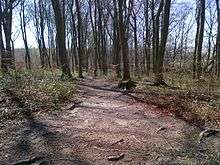 |
2.9 ha (7.2 acres) | Royston 52.0401°N 0.0557°W TL 334 397 |
YES | The site is mature beech woodland, planted in the nineteenth century, and ground flora includes many white helleborine orchids. It has deer and many species of birds.[25] | |
| Frogmore Meadow[26] | 3.3 ha (8.2 acres) | Chenies 51.6791°N 0.5225°W TQ 022 988 |
YES | SSSI[27] | This SSSI has marshy areas and fens next to the River Chess, damp grassland and drier, more acidic areas. The river bank has water voles, and damp areas are dominated by meadow foxtail and Yorkshire fog.[26][27] | |
| Gobions Wood[28] | 36.0 ha (89 acres) | Brookmans Park 51.7213°N 0.1925°W TL 249 040 |
YES | The site is mainly woodland, but additional habitats are grassland, hedges and ponds. 558 species of fungi have been found, two of which have not been recorded previously in Britain, and over 100 which are scarce in Hertfordshire. Birds include blackcaps, chiffchaffs and nuthatches.[28] | ||
| Hawkins Wood[29] | 10.0 ha (25 acres) | Therfield 51.9978°N 0.0517°W TL 338 350 |
YES | The wood is thought to be named after a John Hawkins who is mentioned in documents dated 1676. It is divided by medieval banks and ditches into north, south and central sections. It has woods, fields and hedges, and birds include bullfinch, linnet and yellowhammer. There are also brown hares and deer.[29] | ||
| Hertford Heath[30] | 28.3 ha (70 acres) | Hertford Heath 51.7800°N 0.0423°W TL 351 108 |
YES | SSSI[31] | This site is an example of heathland, a threatened habitat in southern England. It is dominated by heather, and there are grass snakes and slowworms. Sphagnum mosses and creeping willow are found in wetter areas.[30][31] | |
| Hexton Chalk Pit[32] | 1.9 ha (4.7 acres) | Hexton 51.9570°N 0.3897°W TL 107 299 |
YES | This former chalk quarry is grassland with steep slopes and many chalk-loving plants such as horseshoe vetch, yellow-wort and milkwort. There are five species of orchid and a large colony of chalkhill blue butterflies. The site has extensive views over the countryside.[32] | ||
| Hilfield Park Reservoir[33] | 76.3 ha (189 acres) | Bushey 51.651°N 0.336°W TQ 152 959 |
WTO | LNR[34] | This large reservoir is of national importance for pochards, tufted ducks and common tern. The margins have marshy areas with many breeding birds and marsh plants, such as reedmace and reed canarygrass.[34][35] | |
| Hunsdon and Eastwick Meads[36] | 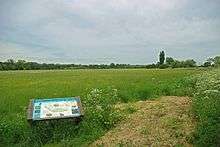 |
28.0 ha (69 acres) | Harlow 51.7758°N 0.0488°E TL 414 105 |
YES | SSSI[37] | This SSSI is unimproved grassland which is subject to flooding in winter. It is one of the last areas in the region to be managed by the old Lammas method of hay-making followed by winter grazing.[37] |
| King's Meads[6] | 96.0 ha (237 acres) | Ware 51.805°N 0.044°W TL 349 136 |
YES | The site is water meadows which are subject to flooding in winter. It has large populations of water birds, and is an important site for over-wintering stonechats. 119 bird species and 265 wildflower species have been recorded.[6] | ||
| Lemsford Springs[38] | 4.0 ha (9.9 acres) | Lemsford 51.7964°N 0.2287°W TL 222 123 |
PO | The sites has lagoons which are fed by springs, so they never freeze over and provide an important habitat for birds in cold winters. There are two bird hides, and birds which can be seen include water rails, snipe and green sandpipers. There are also water shrews and around fifty species of freshwater snails.[38] | ||
| Long Deans[39] | 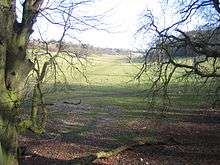 |
15.0 ha (37 acres) | Nash Mills 51.7312°N 0.4441°W TL 075 047 |
YES | This reserve is neutral and chalk grassland and woodland, with beech, ash, oak and wild cherry. The grassland has wild flowers, birds and butterflies. Ancient trees have fungi, birds and bats. Birds include common linnet, common bullfinch and song thrush.[39] | |
| Longspring Wood[40] | 1.2 ha (3.0 acres) | Kings Langley 51.7201°N 0.4213°W TL 091 035 |
YES | The main trees in this small wood are oak, ash, wild cherry and hazel, and there is a display of bluebells in the spring. Birds include warblers, finches and tits, and there are mammals such as foxes and badgers.[40] | ||
| Old Park Wood[41] | 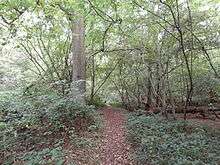 |
7.7 ha (19 acres) | Harefield 51.6112°N 0.4857°W TQ 049 913 |
YES | SSSI[42] | This SSSI is described by Natural England as "one of the most floristically rich ancient woods in Greater London". It is on a steep slope, cut by small valleys, and supports a variety of breeding birds.[42] |
| Oughtonhead[43] | 6.2 ha (15 acres) | Hitchin 51.9602°N 0.2994°W TL 169 304 |
NO | Habitats include wet and dry woodland, the bank of the River Oughton, and fen areas. Willow, reed and rush were formerly grown and harvested in the wetter areas, and there was a corn mill at the eastern end. Birds include kingfishers and water rails, and there are mammals such as water shrews.[43][44] | ||
| Patmore Heath[45] | 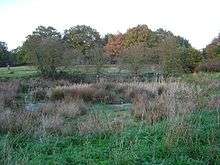 |
8.4 ha (21 acres) | Albury 51.9116°N 0.0943°E TL 441 257 |
YES | SSSI[46] | Most of this SSSI is dry heathland but, in some areas variations in the underlying clay result in pools and marshy areas, which have a varied wetland flora. The heath is also noted for insects such as the emperor dragonfly.[46] |
| Purwell Ninesprings[47] | 6.4 ha (16 acres) | Hitchin 51.9496°N 0.2459°W TL 206 293 |
YES | There is open water with water voles and birds such as moorhens, mallards and teals. Other birds include snipe and siskins. The wet ground has plants such as tussock sedge, yellow iris and water forget-me-nots.[47] | ||
| Ridlins Mire[48] | 1.6 ha (4.0 acres) | Stevenage 51.8845°N 0.1656°W TL 263 222 |
NF | This wetland site is the result of a spring, which has resulted in the growth of peat over many years into a rare domed structure called a rheotrophic hangmire. The dominant plants are tussock sedge and marsh marigold. There are birds such as long-tailed tits and great tits, and butterflies including large whites and small tortoiseshells.[48] | ||
| Rye Meads[49] | 32.0 ha (79 acres) | Rye House 51.7746°N 0.0126°E TL 389 103 |
YES | SSSI[50] Ramsar[50] SPA[50] | This is an ancient flood meadow which has a variety of habitats including reedbed, marshy grassland and fen. It is grazed by ponies and water buffalo. Birds include water rails, bitterns and teals, and there are invertebrates such as frogs, toads and grass snakes.[49] | |
| Stanborough Reedmarsh[51] | 3.3 ha (8.2 acres) | Welwyn Garden City 51.7801°N 0.2177°W TL 230 105 |
YES | LNR[52] | The site is wet willow woodland on the bank of the River Lea. It is important for water voles and birds such as reed and sedge warblers.[52] Water figwort, common meadow rue and water chickweed grow along the river bank.[51] | |
| Stocker's Lake[53] | 40.4 ha (100 acres) | Rickmansworth 51.6346°N 0.4850°W TQ 049 939 |
YES | LNR[54] | This large lake is nationally important for its wintering birds, including goldeneye and smew. It has the largest heronry in Hertfordshire and over sixty bird species have been recorded.[53] | |
| Stocking Springs Wood[55] | 1.1 ha (2.7 acres) | Ayot St Lawrence 51.8256°N 0.2551°W TL 203 155 |
YES | The site is hornbeam woodland, and older trees are gnarled in shape as a result of past coppicing. In spring there are bluebells and wild daffodils, and plants such as wood anemone are indicators that the woodland is ancient.[55] | ||
| Tewin Orchard and Hopkyns Wood[56] | 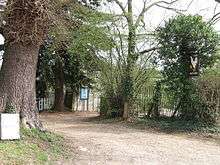 |
4.3 ha (11 acres) | Tewin 51.8242°N 0.1608°W TL 268 155 |
YES | Tewin Orchard is an eighty-year old fruit orchard which has a number of Hertfordshire apple varieties, including the Hitchin Pippin, which was propagated from the last known tree.[57] The orchard attracts many birds, such as fieldfares and redwings. Hopkyns Wood is dominated by oaks and hornbeams, with ground flora of bluebells and ramsons. It also has a mature badger sett.[56] | |
| Tewinbury[58] | 3.6 ha (8.9 acres) | Tewin 51.8242°N 0.1608°W TL 265 140 |
VO | SSSI[59] | This SSSI has alluvial meadows and marshes which are rare in lowland Britain. There are areas of swamp and tall fens, with plants including butterbur and angelica. Otters have been observed on the riverbank.[58] | |
| Thorley Wash[60] | 13.0 ha (32 acres) | Thorley 51.8421°N 0.1607°E TL 489 181 |
YES | SSSI[61] | This site was formerly a flood pound for the Stort Navigation.[60] Habitats include tall wash grassland, which is now rare, marsh and waterlogged grassland. The varied plant species include reed sweet-grass and meadowsweet.[61] | |
| Tring Reservoirs[62] | 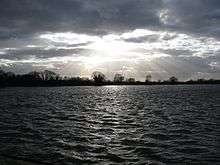 |
55.0 ha (136 acres) | Tring 51.812°N 0.689°W SP 904 134 |
YES | SSSI[63] | The reservoirs are located on the chalk of the Chilterns, and they have clear eutrophic waters with diverse animals and plants. They are an important habitat for birds and invertebrates, including diverse dragonfly species.[63] |
| Uxbridge Alderglade[64] | 2.9 ha (7.2 acres) | Uxbridge 51.5571°N 0.4760°W TQ 057 853 |
YES | This former railway embankment is wet woodland of crack willow and alder, with areas of marsh. Plants include birds-foot trefoil and small toadflax, and mammals the rare Brandt's bat, as well as stoats, weasels and moles.[64] | ||
| Waterford Heath[65] | 35.2 ha (87 acres) | Waterford 51.8185°N 0.0885°W TL 318 150 |
YES | LNR[66] | This is a former quarry, which has grassland, scrub and woodland. Breeding birds include skylarks and willow warblers, and there are reptiles such as slowworms, common lizards and grass snakes.[66] | |
| Willowmead[67] | 1.5 ha (3.7 acres) | Hertford 51.7926°N 0.0954°W TL 314 121 |
YES | The site is on the bank of the River Mimram, and it is wet woodland, mainly of alder trees which are often mature. Water voles and otters have been seen in the river. Water birds include kingfishers, mallards and mandarin ducks. There are breeding birds in the woodland, such as lesser spotted woodpeckers and spotted flycatcher.[67] | ||
Sites formerly managed by the Trust
- Barkway Chalk Pit[68]
- Broad Colney Lakes[69]
- Darland's Lake Nature Reserve
- Hill End Pit[68]
- Marshalls Heath
- Pryor's Wood[68]
- Rowley Green Common
- Sawbridgeworth Marsh
- Telegraph Hill
See also
- List of Sites of Special Scientific Interest in Hertfordshire
- List of Local Nature Reserves in Hertfordshire
Notes
- The charity's legal name is the Hertfordshire and Middlesex Wildlife Trust Limited, but its trading name is the Herts and Middlesex Wildlife Trust.[3]
- The area, location and public access are taken from the Herts and Middlesex Wildlife Trust page for each site.
References
- "Home". Herts and Middlesex Wildlife Trust. Archived from the original on 14 October 2015. Retrieved 19 October 2015.
- "Find Your local Wildlife Trust". Herts and Middlesex Wildlife Trust. Archived from the original on 6 September 2015. Retrieved 19 October 2015.
- "The Hertfordshire and Middlesex Wildlife Trust Limited: 2014 Annual Return and accounts". Charity Commission. Retrieved 24 October 2015.
- "What we do". Herts and Middlesex Wildlife Trust. Archived from the original on 6 September 2015. Retrieved 19 October 2015.
- "Timeline". Herts and Middlesex Wildlife Trust. Archived from the original on 14 November 2015. Retrieved 23 October 2015.
- "King's Meads". Herts and Middlesex Wildlife Trust. Archived from the original on 15 January 2015. Retrieved 19 April 2015.
- "Alpine Meadow citation" (PDF). Sites of Special Scientific Interest. Natural England. Archived (PDF) from the original on 4 March 2016. Retrieved 21 December 2014.
- "Aldbury Nowers". Herts and Middlesex Wildlife Trust. Archived from the original on 5 September 2015. Retrieved 19 April 2015.
- "Aldbury Nowers citation" (PDF). Sites of Special Scientific Interest. Natural England. Archived (PDF) from the original on 24 September 2015. Retrieved 25 July 2015.
- "Alpine Meadow". Herts and Middlesex Wildlife Trust. Archived from the original on 21 December 2014. Retrieved 19 April 2015.
- "Amwell". Herts and Middlesex Wildlife Trust. Archived from the original on 19 April 2015. Retrieved 19 April 2015.
- "Amwell Quarry Nature Reserve - (SSSI SPA RAMSAR)". Royal Society for the Protection of Birds, South East Hertfordshire Local Group. Archived from the original on 29 September 2015. Retrieved 28 September 2015.
- "Ashwell Quarry and Quarry Springs". Herts and Middlesex Wildlife Trust. Archived from the original on 19 April 2015. Retrieved 19 April 2015.
- "A Geological Conservation Strategy for Hertfordshire" (PDF). Hertfordshire RIGS Group. 2003. p. 28. Archived from the original (PDF) on 24 September 2015. Retrieved 24 October 2015.
- "Ashwell Quarry Nature Reserve". Ashwell Museum. Archived from the original on 28 September 2015. Retrieved 27 September 2015.
- "Balls Wood". Herts and Middlesex Wildlife Trust. Archived from the original on 15 February 2015. Retrieved 19 April 2015.
- "Blagrove Common". Herts and Middlesex Wildlife Trust. Archived from the original on 18 April 2015. Retrieved 19 April 2015.
- "Blagrove Common citation" (PDF). Sites of Special Scientific Interest. Natural England. Archived from the original (PDF) on 4 March 2016. Retrieved 12 January 2015.
- "Blagrove Common citation" (PDF). Sites of Special Scientific Interest. Natural England. Archived from the original (PDF) on 4 March 2016. Retrieved 25 July 2015.
- "Broadwater Lake". Herts and Middlesex Wildlife Trust. Archived from the original on 19 April 2015. Retrieved 19 April 2015.
- "Cassiobury Park LNR". Herts and Middlesex Wildlife Trust. Archived from the original on 3 July 2016. Retrieved 19 April 2015.
- "Danemead". Herts and Middlesex Wildlife Trust. Archived from the original on 16 February 2015. Retrieved 19 April 2015.
- "Fir and Pond Woods". Herts and Middlesex Wildlife Trust. Archived from the original on 19 April 2015. Retrieved 19 April 2015.
- Fir and Pond Woods Nature Reserve leaflet. Archived 2015-04-20 at the Wayback Machine Herts and Middlesex Wildlife Trust. Retrieved 30 August 2015.
- "Fox Covert". Herts and Middlesex Wildlife Trust. Archived from the original on 18 April 2015. Retrieved 19 April 2015.
- "Frogmore Meadow". Herts and Middlesex Wildlife Trust. Archived from the original on 11 December 2014. Retrieved 19 April 2015.
- "Frogmore Meadows citation" (PDF). Sites of Special Scientific Interest. Natural England. Archived (PDF) from the original on 3 March 2016. Retrieved 11 December 2014.
- "Gobions Wood". Herts and Middlesex Wildlife Trust. Archived from the original on 20 April 2015. Retrieved 19 April 2015.
- "Hawkins Wood". Herts and Middlesex Wildlife Trust. Archived from the original on 18 April 2015. Retrieved 19 April 2015.
- "Hertford Heath". Herts and Middlesex Wildlife Trust. Archived from the original on 11 April 2015. Retrieved 19 April 2015.
- "Hertford Heath citation" (PDF). Sites of Special Scientific Interest. Natural England. Archived from the original (PDF) on 4 March 2016. Retrieved 25 July 2015.
- "Hexton Chalk Pit". Herts and Middlesex Wildlife Trust. Archived from the original on 4 April 2015. Retrieved 19 April 2015.
- "Hilfield Park Reservoir". Herts and Middlesex Wildlife Trust. Archived from the original on 5 July 2015. Retrieved 19 April 2015.
- "Hilfield Park Reservoir". Local Nature Reserves. Natural England. 14 March 2013. Archived from the original on 29 September 2015. Retrieved 29 July 2015.
- "Hilfield Park Reservoir Wildlife Report 2013" (PDF). Herts and Middlesex Wildlife Trust and Affinity Water. Archived (PDF) from the original on 29 September 2015. Retrieved 29 July 2015.
- "Hunsdon and Eastwick Meads". Herts and Middlesex Wildlife Trust. Archived from the original on 14 September 2016. Retrieved 19 April 2015.
- "Hunsdon Mead citation" (PDF). Sites of Special Scientific Interest. Natural England. Archived (PDF) from the original on 4 March 2016. Retrieved 26 July 2015.
- "Lemsford Springs". Herts and Middlesex Wildlife Trust. Archived from the original on 6 April 2015. Retrieved 19 April 2015.
- "Long Deans". Herts and Middlesex Wildlife Trust. Archived from the original on 27 April 2015. Retrieved 19 April 2015.
- "Longspring Wood". Herts and Middlesex Wildlife Trust. Archived from the original on 20 April 2015. Retrieved 19 April 2015.
- "Old Park Wood". Herts and Middlesex Wildlife Trust. Archived from the original on 11 April 2015. Retrieved 19 April 2015.
- "Old Park Wood citation" (PDF). Sites of Special Scientific Interest. Natural England. Archived (PDF) from the original on 4 March 2016. Retrieved 26 July 2015.
- "Oughtonhead". Herts and Middlesex Wildlife Trust. Archived from the original on 3 April 2015. Retrieved 19 April 2015.
- "Oughtonhead Common, Hitchin" (PDF). North Hertfordshire District Council. Archived (PDF) from the original on 24 September 2015. Retrieved 13 August 2015.
- "Patmore Heath". Herts and Middlesex Wildlife Trust. Archived from the original on 13 December 2014. Retrieved 19 April 2015.
- "Patmore Heath citation" (PDF). Sites of Special Scientific Interest. Natural England. Archived from the original (PDF) on 4 March 2016. Retrieved 26 July 2015.
- "Purwell Ninesprings". Herts and Middlesex Wildlife Trust. Archived from the original on 11 April 2015. Retrieved 19 April 2015.
- "Ridlins Mire". Herts and Middlesex Wildlife Trust. Archived from the original on 11 April 2015. Retrieved 19 April 2015.
- "Rye Meads". Herts and Middlesex Wildlife Trust. Archived from the original on 17 July 2015. Retrieved 19 April 2015.
- "Rye Meads (SSSI SPA RAMSAR)". Royal Society for the Protection of Birds, South East Hertfordshire Local Group. Archived from the original on 29 September 2015. Retrieved 28 September 2015.
- "Stanborough Reedmarsh". Herts and Middlesex Wildlife Trust. Archived from the original on 11 February 2015. Retrieved 19 April 2015.
- "Stanborough Reedmarsh". Local Nature Reserves. Natural England. 14 March 2013. Archived from the original on 10 February 2015. Retrieved 16 February 2015.
- "Stocker's Lake". Herts and Middlesex Wildlife Trust. Archived from the original on 21 March 2015. Retrieved 19 April 2015.
- "Stockers Lake". Local Nature Reserves. Natural England. 14 March 2013. Archived from the original on 29 September 2015. Retrieved 28 September 2015.
- "Stocking Springs Wood". Herts and Middlesex Wildlife Trust. Archived from the original on 11 April 2015. Retrieved 19 April 2015.
- "Tewin Orchard and Hopkyns Wood". Herts and Middlesex Wildlife Trust. Archived from the original on 5 February 2015. Retrieved 19 April 2015.
- "Tewin Orchard". Herts and Middlesex Wildlife Trust. Archived from the original on 11 September 2015. Retrieved 30 August 2015.
- "Tewinbury". Herts and Middlesex Wildlife Trust. Archived from the original on 2 April 2015. Retrieved 19 April 2015.
- "Tewinbury citation" (PDF). Sites of Special Scientific Interest. Natural England. Archived (PDF) from the original on 4 March 2016. Retrieved 22 March 2015.
- "Thorley Wash". Herts and Middlesex Wildlife Trust. Archived from the original on 13 December 2014. Retrieved 19 April 2015.
- "Thorley Flood Pound citation" (PDF). Sites of Special Scientific Interest. Natural England. Archived (PDF) from the original on 3 March 2016. Retrieved 11 March 2015.
- "Tring Reservoirs". Herts and Middlesex Wildlife Trust. Archived from the original on 27 April 2015. Retrieved 19 April 2015.
- "Tring Reservoirs citation" (PDF). Sites of Special Scientific Interest. Natural England. Archived (PDF) from the original on 4 March 2016. Retrieved 13 January 2015.
- "Uxbridge Alderglade". Herts and Middlesex Wildlife Trust. Archived from the original on 11 April 2015. Retrieved 19 April 2015.
- "Waterford Heath". Herts and Middlesex Wildlife Trust. Archived from the original on 5 February 2015. Retrieved 19 April 2015.
- "Waterford Heath". Local Nature Reserves. Natural England. 16 March 2013. Archived from the original on 8 August 2014. Retrieved 26 July 2015.
- "Willowmead". Herts and Middlesex Wildlife Trust. Archived from the original on 5 February 2015. Retrieved 19 April 2015.
- "North Herts District Council takes back management of three Trust nature reserves". Herts and Middlesex Wildlife Trust. 15 February 2016. Archived from the original on 4 April 2016. Retrieved 4 April 2016.
- "Broad Colney Lakes". Herts and Middlesex Wildlife Trust. Archived from the original on 19 April 2015. Retrieved 19 April 2015.
External links
| Wikimedia Commons has media related to Herts and Middlesex Wildlife Trust. |